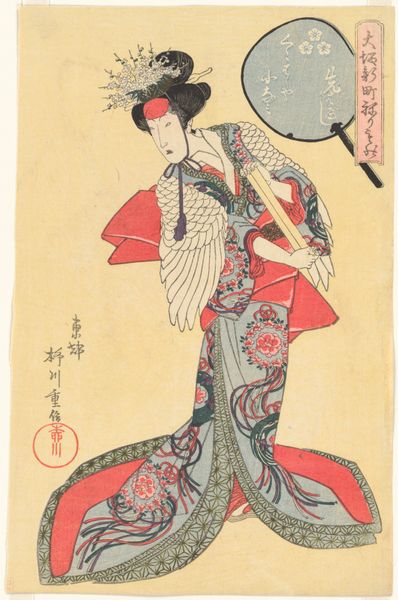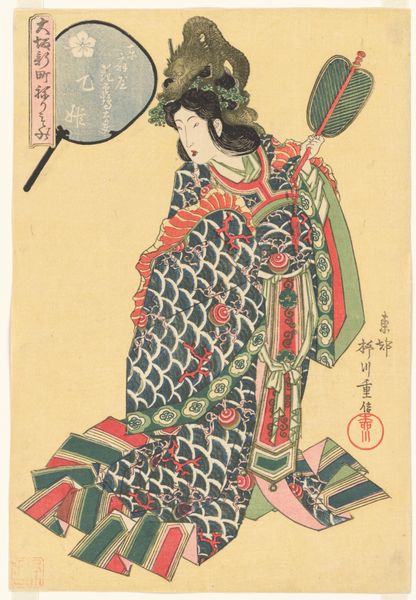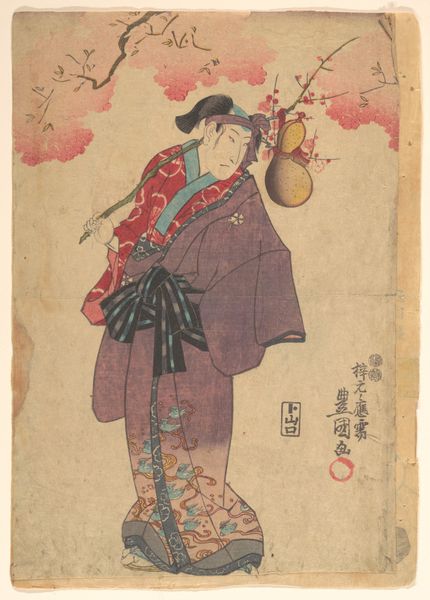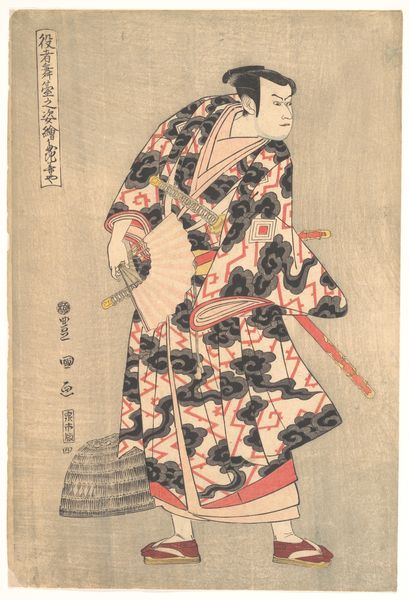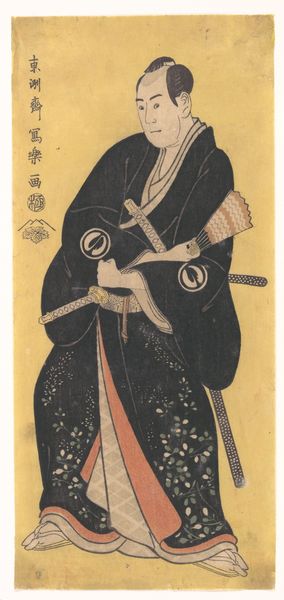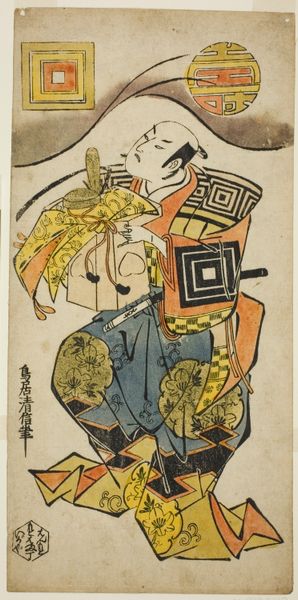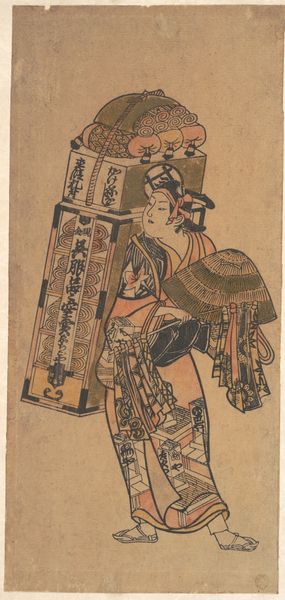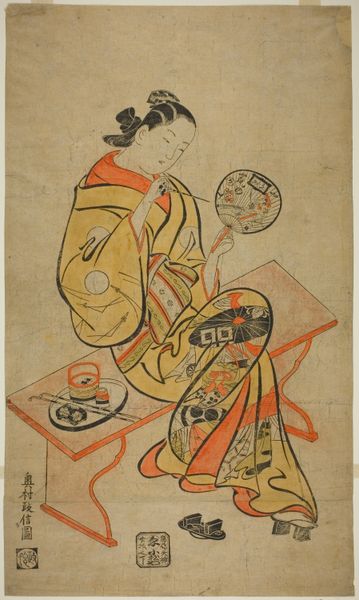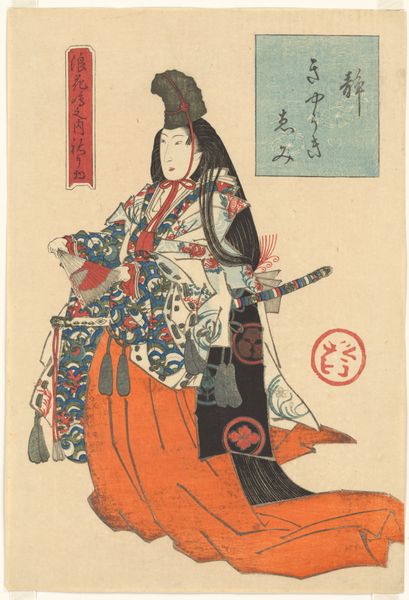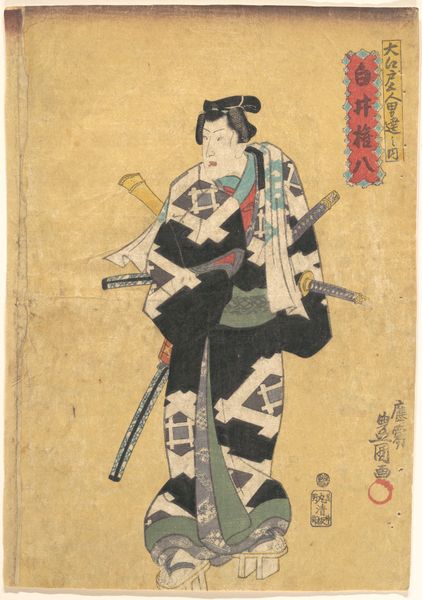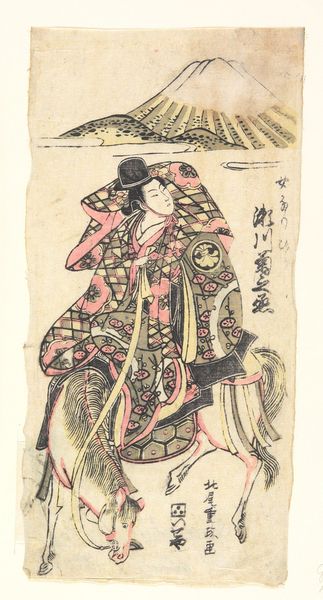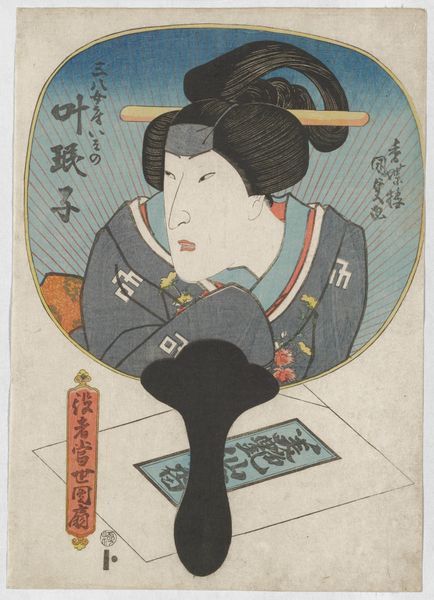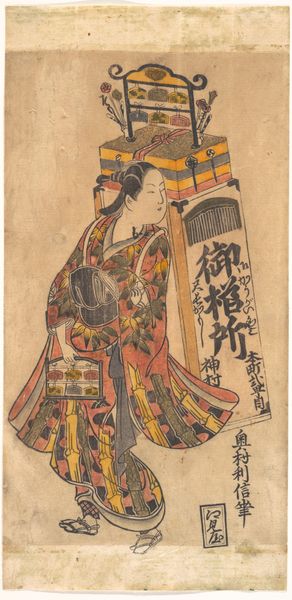
The Courtesan Kotozuru of the Tsuruya Brothel as an Asazuma Boat Prostitute (Tsuruya Kotozuru-dayū Asazuma-bune), from the series Costume Parade of the Shinmachi Quarter in Osaka (Ōsaka Shinmachi nerimono) 1822
0:00
0:00
print, woodblock-print
#
portrait
# print
#
asian-art
#
ukiyo-e
#
figuration
#
woodblock-print
#
genre-painting
Dimensions: Image: 15 1/2 × 10 3/8 in. (39.4 × 26.4 cm)
Copyright: Public Domain
Curator: This woodblock print from 1822, titled "The Courtesan Kotozuru of the Tsuruya Brothel as an Asazuma Boat Prostitute," offers a glimpse into Osaka's Shinmachi district. Yanagawa Shigenobu, the artist, situates his figure within the lively Costume Parade of the Shinmachi Quarter. Editor: There’s a stillness to it, despite the subject matter. The ochre background and delicate linework give it a quiet, almost melancholic mood. Her garments seem to confine her; are the clothes controlling the pose? Curator: Consider the production context. Ukiyo-e prints were commodities, widely consumed. The subject – a high-ranking courtesan – reveals consumer culture and the spectacle of desire within the brothel. What social relationships and labor practices do you imagine shaped the creation and consumption of these images? Editor: I’m immediately drawn to the visual elements. The contrast between the flat planes of color and the intricate patterns on her robe creates a compelling tension. The artist’s choice of asymmetry with the fan enhances the visual interest. How would you interpret these stylistic decisions? Curator: The very act of portraying a courtesan, her image made into a mass-produced print, speaks volumes about the commodification of women's bodies and the labor inherent in their presentation. What were the working conditions for both the women and the printmakers involved in its creation and distribution? Editor: Semiotically, we could see her pose as a carefully constructed sign. Her slightly averted gaze, the positioning of her hands, the elaborate hairstyle - all contribute to a carefully managed presentation of beauty and status. Is she aware of being consumed as image, I wonder? Curator: Precisely. We can ask who profited most from this representation? Was it Kotozuru herself, the brothel owner, the artist, or the consumers who sought to possess her image through these prints? How did this contribute to or challenge existing power structures within the Shinmachi district? Editor: For me, the beauty lies in its synthesis of form and materiality. The subtle gradations of color achieved through woodblock printing, combined with the elegant composition, invite prolonged viewing. I keep returning to the formal constraints. Curator: Ultimately, examining the context of materials and labor allows us to interpret this as more than just a pretty picture. It is a social artifact of immense significance that opens up larger dialogues. Editor: Perhaps its success lies in capturing a paradox: the spectacle of freedom through the constraints of rigid design, forever embedded in its historical context. A compelling intersection of worlds.
Comments
No comments
Be the first to comment and join the conversation on the ultimate creative platform.
